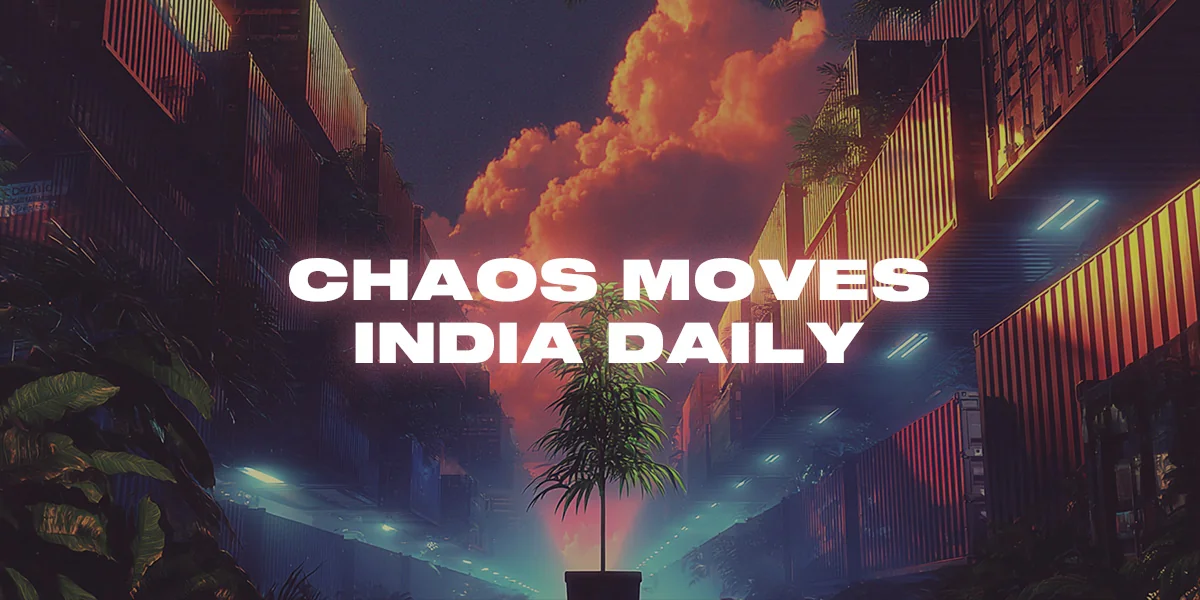Ever wondered how a single parcel can travel from a Himalayan village to a Mumbai skyscraper-without getting lost in the chaos?
If you think Indian traffic is wild, wait till you see what happens behind the scenes in logistics. Here's a stat to chew on: India spends nearly 0% of its GDP on logistics-almost double the global average.
So why is moving stuff across India so complicated…and how does the system keep bouncing back, no matter what?
🧭 The Real Reason Indian Logistics Feels Like a Maze
Let's pull back the curtain on India's logistics sector-a world where diversity, fragmentation, and innovation collide daily.
If you're a business owner, supply chain nerd, or just curious about what keeps the country moving, this post is for you. By the end, you'll see why complexity isn't just a headache-it's the secret sauce behind India's logistics resilience (plus, how to spot the biggest opportunities for growth).
⚙️ The Moving Parts: What Makes Indian Logistics So Complex?
India's logistics system is not for the faint of heart. Here's why it's a beast:
- Vast and Varied Geography: From deserts to dense cities, every route needs a custom playbook.
- Fragmented Industry: Over 1,000 companies (and countless small players) means everyone's doing things their own way.
- Patchy Infrastructure: Congested highways, overworked ports, and rural roads that turn into rivers during monsoon.
- Regulatory Tangles: Multiple layers of rules, taxes, and paperwork at every state border.
- Sky-High Costs: Shipping something across India can cost up to 14% of its value-ouch.
- Tech Gaps: Some fleets run on AI, some on Excel sheets (and some on pure hustle).
It's like trying to choreograph a flash mob in a crowded bazaar-exciting, but chaos is always one step away.
Complexity in Indian logistics isn't a bug; it's the system's default setting.
💡 Resilience: How Indian Logistics Bounces Back, Again and Again
Here's the twist: Complexity breeds resilience. When COVID hit, or global supply chains wobbled, India's logistics sector didn't collapse-it adapted.
- Rapid Recovery: Companies rerouted, switched suppliers, and kept essentials moving when it mattered most.
- Policy Push: Reforms like GST and the National Logistics Policy are slowly untangling the red tape.
- Tech Leapfrogging: Startups and giants alike are using AI, IoT, and real-time tracking to turn chaos into opportunity.
- Workforce Grit: Millions of drivers, warehouse workers, and planners keep the wheels turning-often against the odds.
Think of it like bamboo: flexible, but hard to break.
The more moving parts you have, the more ways you can adapt when things go sideways.
🧭 Navigating the Pain Points: What Still Holds Us Back?
Let's get real-resilience doesn't mean perfection. Here's where the cracks show:
- Infrastructure Gaps: Rural areas still struggle with basic connectivity.
- High Operational Costs: Fuel prices, tolls, and inefficiency eat into profits.
- Regulatory Hurdles: Slow customs and varying state rules slow everything down.
- Skill Shortages: Not enough trained drivers or logistics pros to go around.
- Environmental Toll: Diesel trucks and inefficient routes = big carbon footprint.
If you've ever waited days for a parcel-or paid more than you expected-you've felt these pain points firsthand.
Fixing logistics isn't just about speed-it's about smoothing out the entire journey.
📈 Opportunity Knocks: Where Indian Logistics Is Headed Next
Here's the good news: Every headache is a hidden opportunity.
- Digital Transformation: More companies are ditching paperwork for platforms, making every shipment visible in real time.
- Multimodal Integration: Logistics parks and freight corridors are connecting road, rail, air, and waterways-cutting costs and delays.
- Green Logistics: From electric trucks to eco-friendly warehouses, sustainability is finally on the radar.
- E-commerce Boom: Online shopping is pushing logistics firms to get faster, smarter, and more customer-focused.
- 3PL Expansion: Third-party logistics providers are helping businesses scale without the usual headaches.
If you're looking to invest, innovate, or just understand where the next wave of growth is coming from-this is where to watch.
The best logistics solutions are built where complexity and creativity collide.
🏗️ Who's Leading the Charge? (And What You Can Learn)
A few players are rewriting the rules:
- Delhivery: AI-powered fleet management and nationwide reach.
- Mahindra Logistics: Green vehicles and integrated supply chains.
- Allcargo Logistics: Global multimodal ops with a digital edge.
- TCI, Blue Dart, Shiprocket Fulfillment: Each with their own tech, tracking, and scale stories.
- Government Initiatives: PM Gati Shakti, dedicated freight corridors, and more.
What do they have in common? Relentless focus on tech, talent, and adaptability.
In Indian logistics, the winners are the ones who learn-and pivot-fastest.
💭 Your Turn: The Logistics Stories We All Share
Ever been surprised (for better or worse) by a delivery in India? Or have a logistics hack that saved your business time or money?
India's logistics labyrinth touches everyone-from the farmer shipping produce to the startup scaling nationwide. The complexity that frustrates us today is building the resilience that will power tomorrow's economy.
The next time your package takes an unexpected detour, remember: you're witnessing one of the world's most complex logistics systems in action-and that's exactly why it works.
